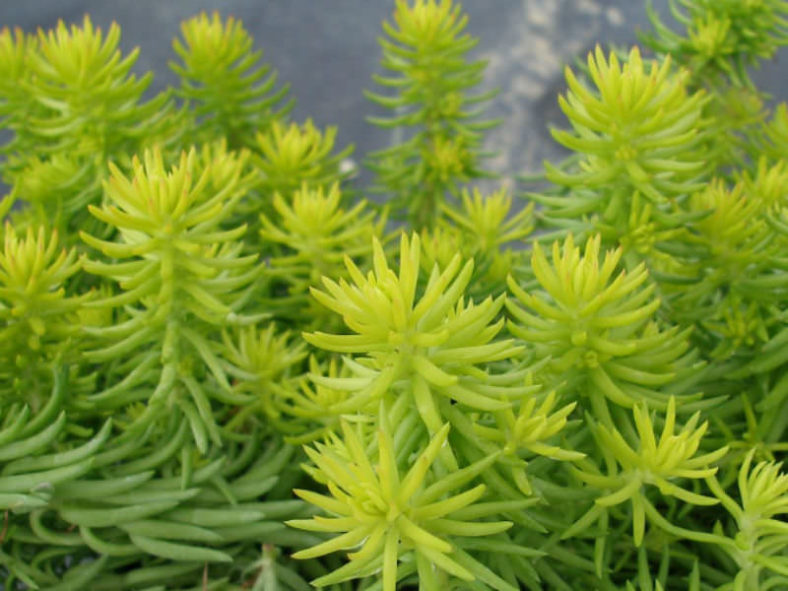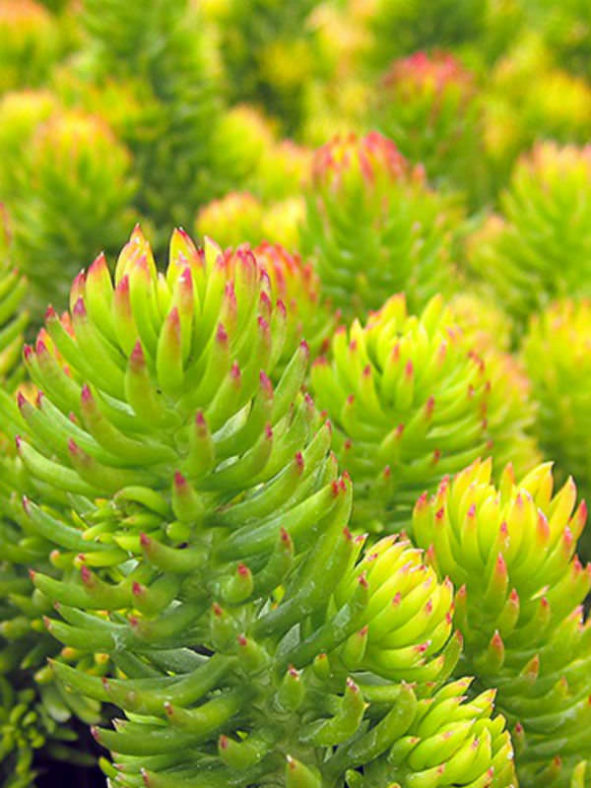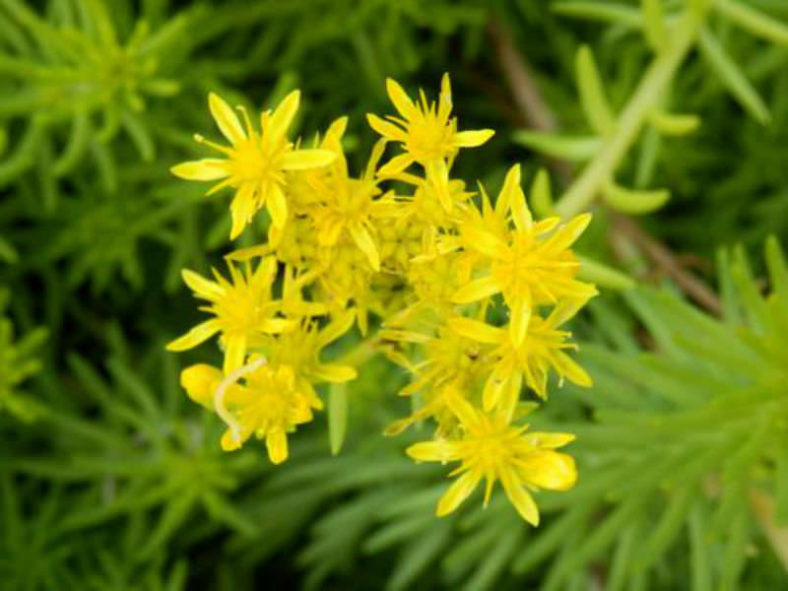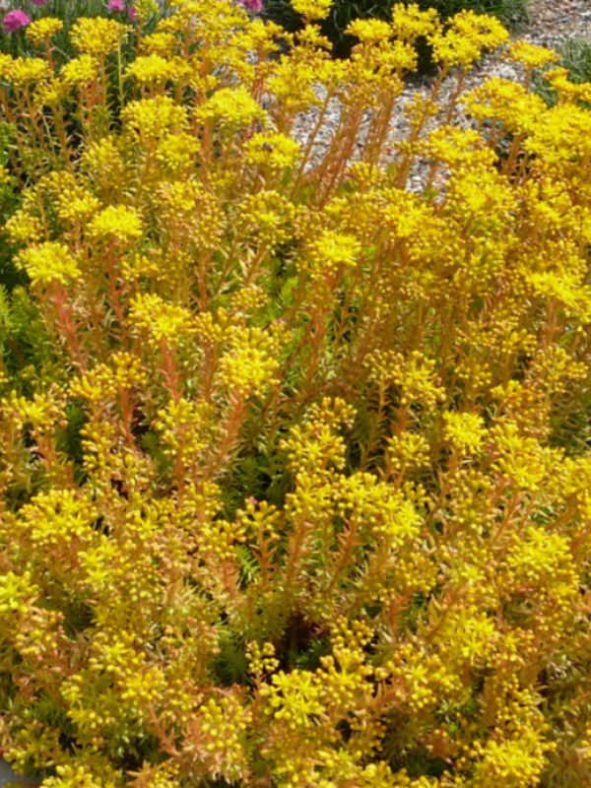Scientific Name
Petrosedum rupestre 'Angelina'
Common Name(s)
Angelina Stonecrop, Golden Sedum
Synonym(s)
Petrosedum rupestre subsp. rupestre 'Angelina', Sedum rupestre 'Angelina', Sedum 'Angelina'
Scientific Classification
Family: Crassulaceae
Subfamily: Sedoideae
Tribe: Sedeae
Subtribe: Sedinae
Genus: Petrosedum
Origin
Petrosedum rupestre 'Angelina' is a yellow-leaved cultivar of Petrosedum rupestre.
Description
Petrosedum rupestre 'Angelina', formerly known as Sedum rupestre 'Angelina', is a mat-forming succulent with much-branched, prostrate stems and brilliant golden yellow leaves. It can grow up to 5 inches (12.5 cm) tall. The needle-like leaves turn reddish-orange in fall and winter.
The star-shaped flowers are vibrant yellow and appear in terminal clusters in summer.

Hardiness
USDA hardiness zones 5a to 9b: from -20°F (-28.9°C) to 30°F (-1.1°C).
How to Grow and Care
When growing Sedums, keep in mind that these plants need very little attention or care. They will thrive in conditions where many other plants thrive, but also do just as well in less hospitable areas. They are ideal for that part of your yard that receives too much sun or too little water to support the growth of other plants. A common name for Sedum is Stonecrop because many gardeners joke that only stones need less care and live longer.
Sedum is easily planted. Simply laying the plant on the ground where you want it to grow is usually enough to get it started for shorter varieties. They will send out roots from wherever the stem touches the ground and root itself. If you would like to ensure that the plant starts there, you can add a very thin layer of soil over the plant.
You can break off one of the stems for taller varieties and push it into the ground where you want to grow it. The stem will root very easily, and a new plant will be established in a season or two.
Learn more at How to Grow and Care for Sedum.
Links
- Back to genus Petrosedum
- Succupedia: Browse succulents by Scientific Name, Common Name, Genus, Family, USDA Hardiness Zone, Origin, or cacti by Genus
Photo Gallery
Click on a photo to see a larger version.


